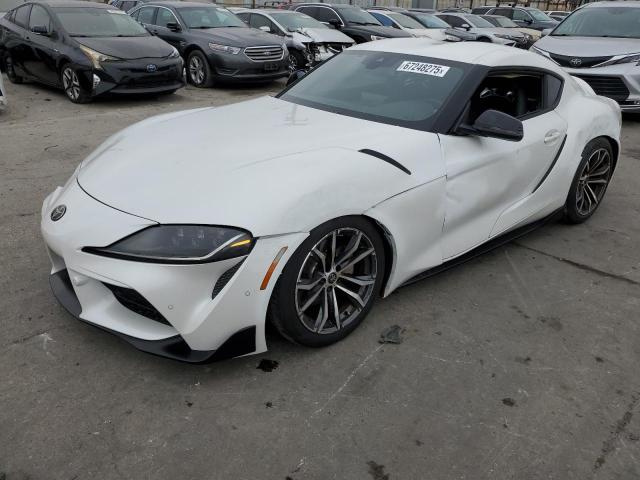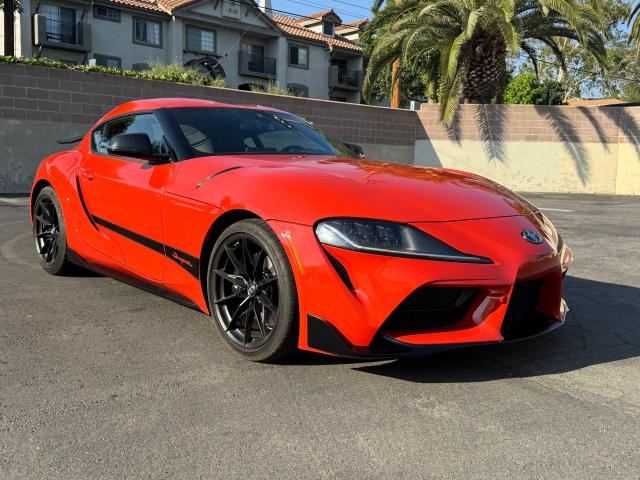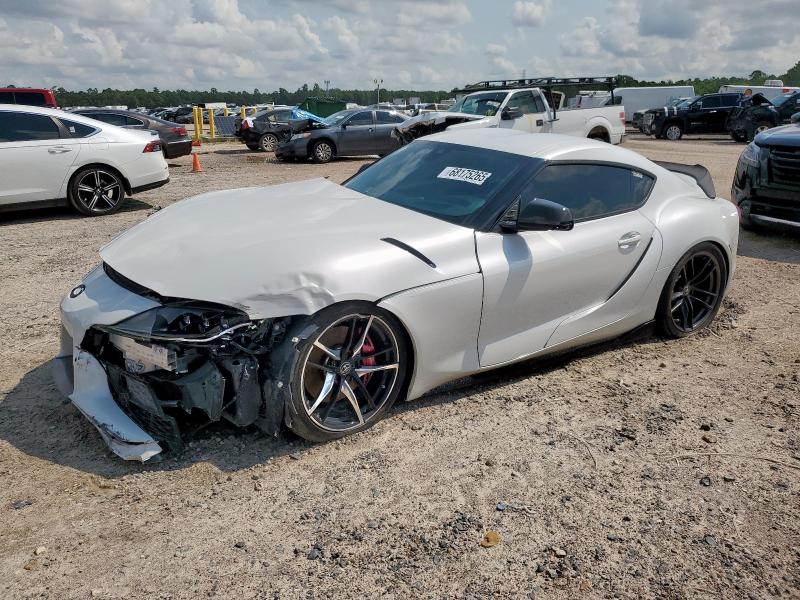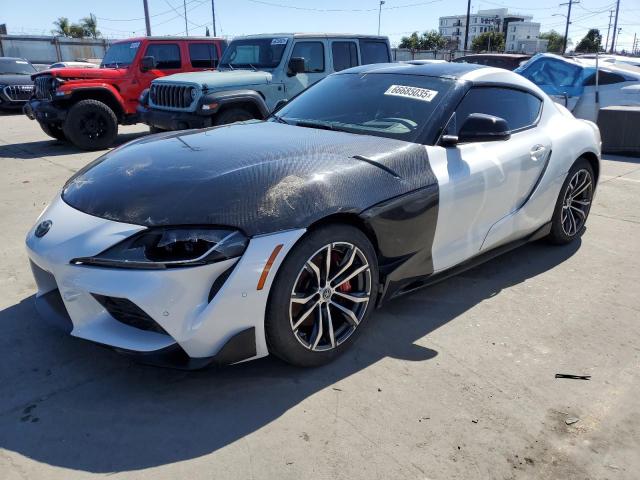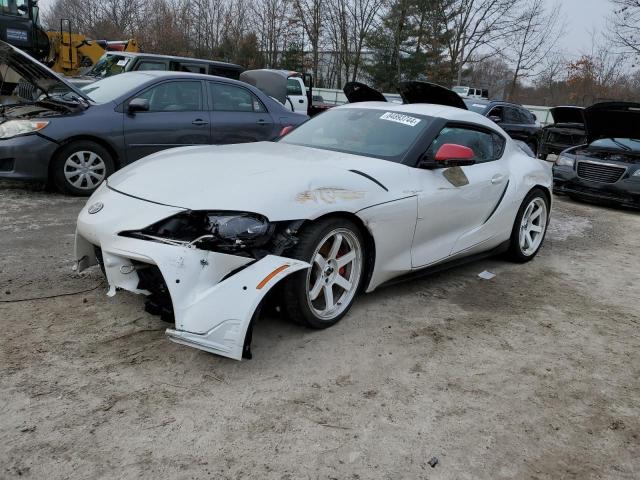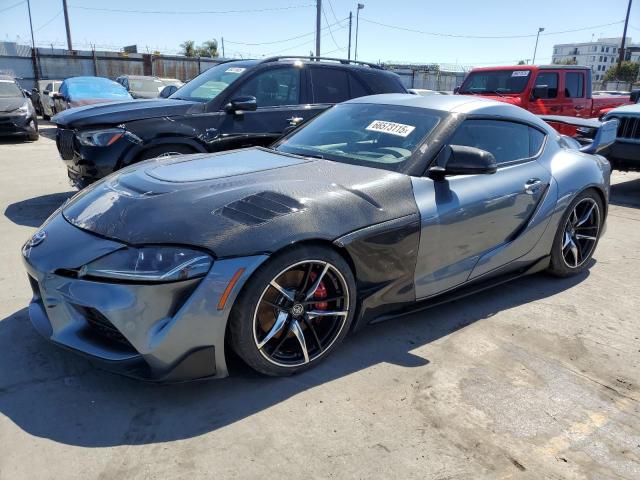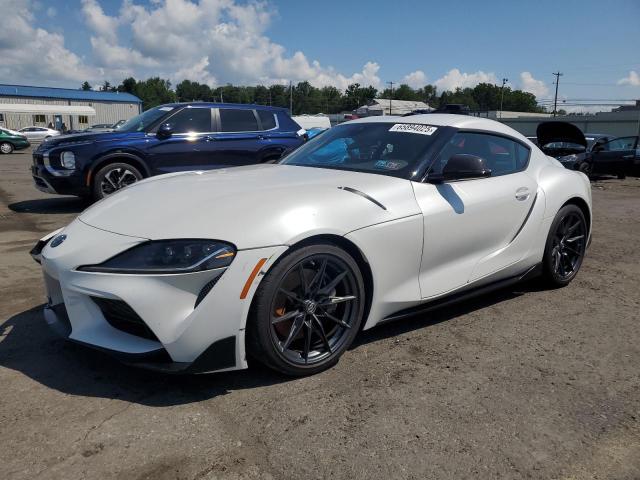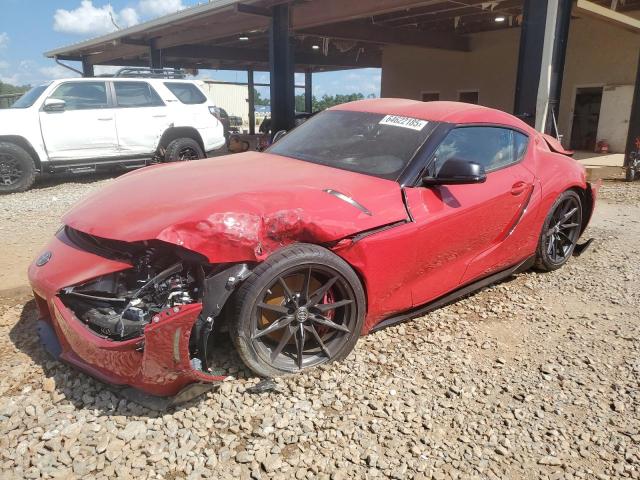1995 TOYOTA SUPRA | JT2JA81J6S0024855
Lot details
- Sale Date2025-05-01
- Lot Number41869891
- ACV48164 $
- Sale documentSalvage (Georgia)
- LocationAtlanta East (GA)
- Odometer120,685 miles (194,223 km)
- Primary DamageLEFT REAR
- Secondary DamageUNKNOWN
- SellerProgressive Casualty Insurance
Vehicle specifications
2
~$40,000
Engine: 3.0L twin-turbocharged inline-6
Torque: 451 Nm
0–100 km/h: ~4.6
The Mk4 Toyota Supra is one of the most celebrated Japanese sports cars of all time, and its performance pedigree stems from the now-legendary 2JZ-GTE engine. With twin sequential turbochargers, forged internals, and a closed-deck iron block, the 2JZ platform proved capable of handling far more power than it produced stock—earning it mythical status among tuners. Even in factory form, the Supra Twin Turbo delivered ferocious acceleration, completing the 0–100 km/h sprint in under five seconds and topping out (delimited) around 250 km/h. The available 6-speed Getrag V160 manual gearbox in higher trims added mechanical precision and durability rarely seen in production sports cars of the era.
Beyond straight-line performance, the Supra Mk4 featured sophisticated multi-link suspension, nearly perfect weight distribution, and a wide track, giving it excellent composure through corners. The optional Torsen limited-slip differential and adaptive sport suspension settings on some JDM variants added further control. The design prioritized high-speed stability, with its distinctive integrated rear wing delivering real aerodynamic benefit at elevated velocities. Its steering was weighty but direct, and despite being a GT car in size, the Supra responded like a focused performance coupe.
Toyota's decision to over-engineer the A80 Supra paid dividends—not only in motorsport, where it saw success in Super GT and drag racing, but also in long-term legacy. While its stock capabilities were impressive, the Supra’s defining characteristic was its immense tuning potential, with many modified examples surpassing 1,000 hp without internal engine upgrades. From Fast & Furious fame to Nürburgring battles, the Mk4 Supra stood as a symbol of 1990s Japanese engineering excellence and remains a global icon in performance automotive culture.
Final Bid Toyota Supra (1995)
$30,650
$30,650
$30,650
Body Styles
The Mk4 Supra was available exclusively as a 2-door sports coupe, with either a fixed roof or a removable Sport Roof (Targa Top) on most U.S. versions. It featured wide rear haunches, a long hood, integrated rear spoiler (iconic wing on Turbo), and pop-up headlights replaced by fixed lenses. The design was inspired by jet fighters and the 2000GT, focusing on aerodynamics (Cd 0.31) and muscular proportion. Lightweight materials like aluminum hood, targa roof, and plastic fuel tank helped reduce weight.
Model Name Meaning (Manufacturer)
“Supra” is Latin for “above” or “transcend,” reflecting Toyota’s intention to position the car above the Celica and most other offerings — both in performance and refinement. The Mk4 was designed to compete with the world’s best sports cars while staying true to Toyota’s reliability and engineering focus.
Model Name Meaning (Languages)
The name “Supra” holds meaning across languages as a term for superiority or transcendence. In Latin-derived languages, “supra” implies a level beyond or over something — aligning with its high-performance character. This made it a universally marketable and aspirational nameplate.
Body & Interior Colors and Rims
The Mk4 Supra offered a bold and era-defining set of exterior paints, including Super White, Renaissance Red, Royal Sapphire Pearl, Quicksilver FX, Deep Jewel Green, and Black Metallic. Japan received exclusive hues like Moonstone Pearl and Bayou Blue. Turbo models often came with body-colored side skirts and the large rear wing. The removable Targa Top was offered in body color and could be stored in the trunk.
Inside, the Supra featured a driver-focused cockpit with a signature wraparound dashboard angled toward the driver — a pioneering layout at the time. Interior color schemes included black, tan, and blue cloth or leather (U.S. models), while higher-spec Japanese models offered two-tone or suede finishes. Key features included automatic climate control, a premium JBL sound system, and optional leather sport seats.
Wheels were 16-inch alloys on the naturally aspirated models and 17-inch 5-spoke polished alloys on the Turbo. In Japan, the Supra RZ and later RZ-S received lightweight BBS forged alloys. Many enthusiasts later upgraded to aftermarket wheels like Volk TE37, Enkei RPF1, or HRE for performance and style.
Top Expensive Options
- Getrag V160 6-speed manual gearbox (Turbo only): Standard, but now valued ~$12,000+
- Targa Top Sport Roof (removable panel): ~$800
- Limited Slip Differential (Torsen type): ~$500 option, standard on Turbo
- Active Front Spoiler (JDM): ~$1,200
- OEM Bilstein Suspension (RZ models): ~$2,000
- Recaro Seats (Japan-only models): ~$3,000
- Digital Dash (Japan-only early models): Rare option
- Rear Fog Lamps and Folding Mirrors (JDM): ~$800 combined
- Factory Aero Kit (side skirts, front lip, rear valence): ~$2,500
- Factory Navigation and TEMS system (rare in Japan): ~$1,500
vs Competitors
The Mk4 Supra was engineered to outperform European and American sports cars at the time, including the Chevrolet Corvette C4, Mazda RX-7 FD, Mitsubishi 3000GT VR-4, Porsche 968, and Nissan 300ZX TT. It was lighter and quicker than many, with near-perfect 50:50 weight distribution, and its 2JZ-GTE engine became legendary for its overbuilt internals — capable of reliably handling 800–1,000+ hp with proper tuning. While the RX-7 was more agile and the 3000GT more tech-laden, the Supra found the perfect middle ground: accessible speed, reliable power, and immense tuning potential.
Fun Fact
The 2JZ-GTE engine in the Supra is one of the most revered performance engines in the world. Thanks to forged internals, a closed-deck block, and stout iron construction, it has powered countless 1,000+ hp builds. The Supra’s cultural impact skyrocketed after its appearance in The Fast and the Furious (2001), where Brian O’Conner’s orange Mk4 Supra became a global icon. As of the 2020s, clean manual Turbo examples can fetch $100,000+ at auctions — making it one of the most appreciating Japanese classics in existence.


